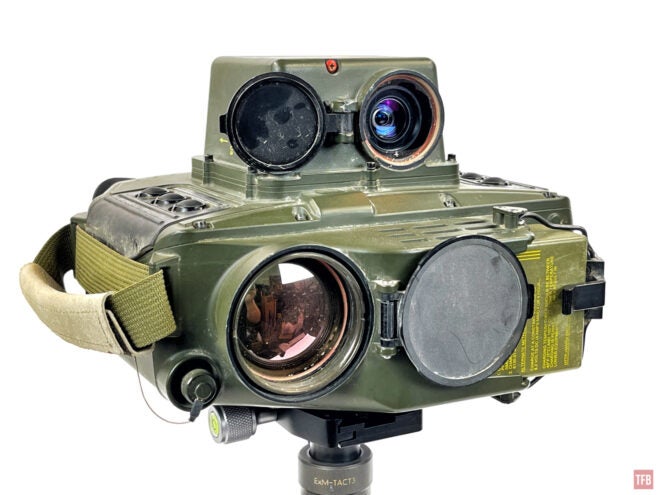Hello and how are you on this Friday night? Did you enjoy reading about the Thermal Camo 2.0 test last Friday? Well, today we have a very rare and obscure thermal spotter, there CORAL-SD by El-Op which is a division of Elbit Systems.
More Thermal Spotters @ TFB:
- Friday Night Lights: FLIR See Spot III (AN/PAS-21) Long Range MWIR Thermal
- Friday Night Lights: PAS-28 MRTB Elcan Raytheon PhantomIR
- Friday Night Lights: SAFRAN JIM LR – Cooled Thermal Biocular LRF
ELBIT PAS-22 LRTI (CORAL)
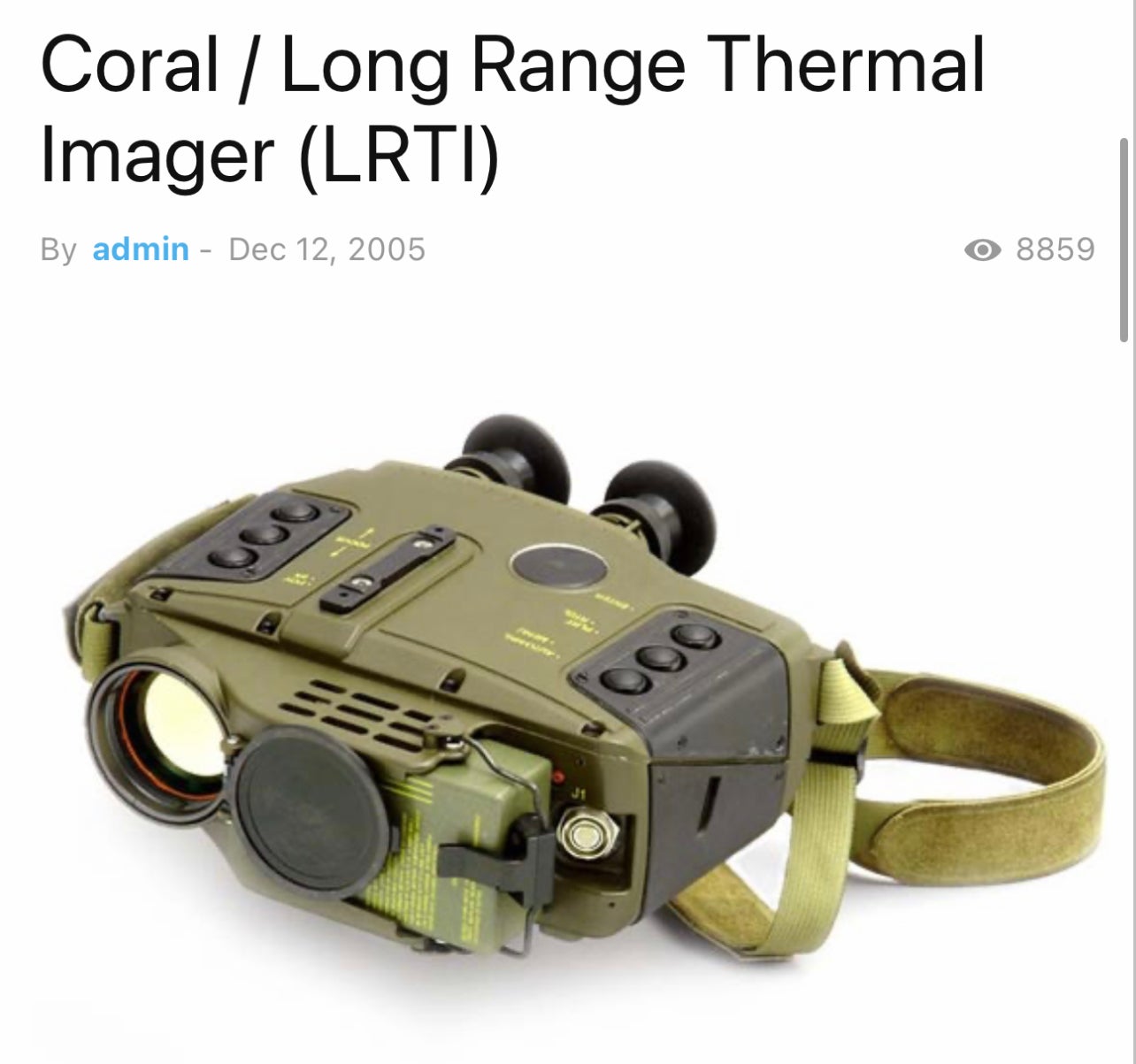
Photo by ELBIT America
The Marines have something called a PAS-22 LRTI but Elbit Systems calls it the CORAL. This is different from the CORAL SD. It does not have the Day camera bolted to the top. It is a cooled thermal with optical zoom. It is a simpler version of a JIM-LR. While it has optional accessories like GPS, laser pointer and compass. These are all features built into the JIM-LR by SAFRAN. I assume the PAS-22 LRTI uses that black accessory rail on the top of the housing to mount the lasers.
CORAL-SD MWIR Spotter
Thanks to Matt Y. for letting me borrow this CORAL-SD. It is a very obscure device. I have not been able to find much about it online. This is all I could find on Elbit’s website.
CORAL-SD is a revolutionary thermal camera that can remotely detect IEDs and other covert threats under clothing, without invading personal privacy. The camera utilizes advanced sensors and cutting-edge algorithms to passively detect a range of threats and thermal anomalies including explosive belts made of plastic and potentially dangerous materials such as glass, ceramic and fluids.
The only other mention of the CORAL-SD that I could find online was on the ArmyRecognition website.
Coral-SD now known as Emerald-SD is a tripod mounted/hand held, high-performance, short range day/night thermal imaging system using a latest generation day camera and a highly sensitive InSb Focal Plane Array thermal camera. This system is used for
special detection applications such as crowd control and check point security applications. Emerald-SD features an advanced high resolution detector, integral day CCD cameras, advanced high resolution color OLED display and an adjustable binocular viewer. It is ideal for short range surveillance and targeting, security and perimeter defense, installation security and target identification and confirmation.
This intrigued me if it could really do what they claim. However, Matt does not know how this works. He did not even have a battery for it but luckily it uses the same type of batteries as the JIM-LR/LRTV. However, the CORAL-SD has different style battery connectors than the JIM-LR. The JIM-LR has curved brass contacts that touch the brass rectangular contacts shown below. The CORAL-SD has actual pins that plug into the battery. The Bren-Tronics BT-70747 battery and similar batteries have a plastic sticker that covers up the female battery ports. Peel the sticker off and you can plug the battery into the CORAL-SD.
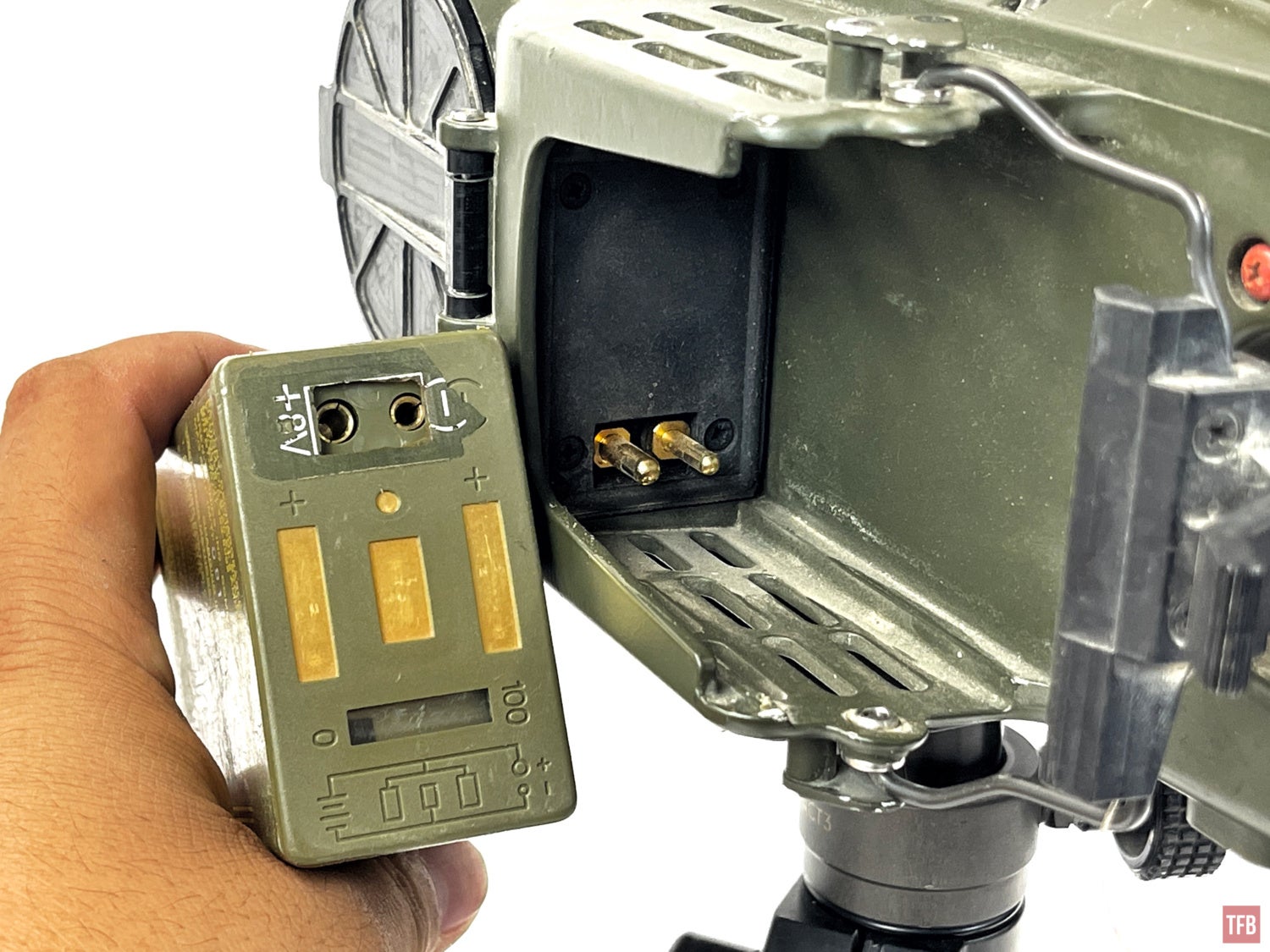
The CORAL-SD has metal lens covers for the thermal objective and day camera. The battery is installed in the front with a snap lever closure.
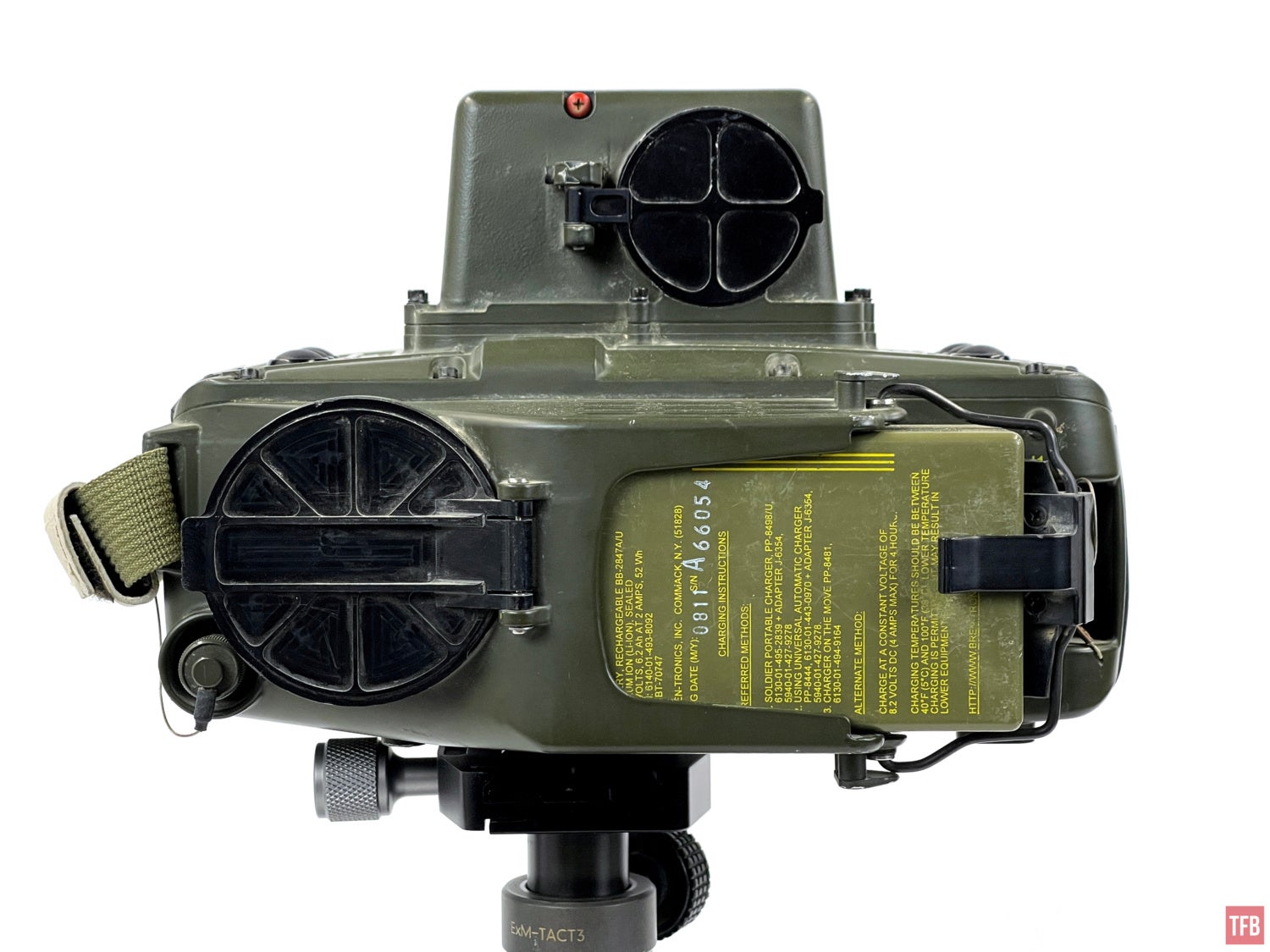
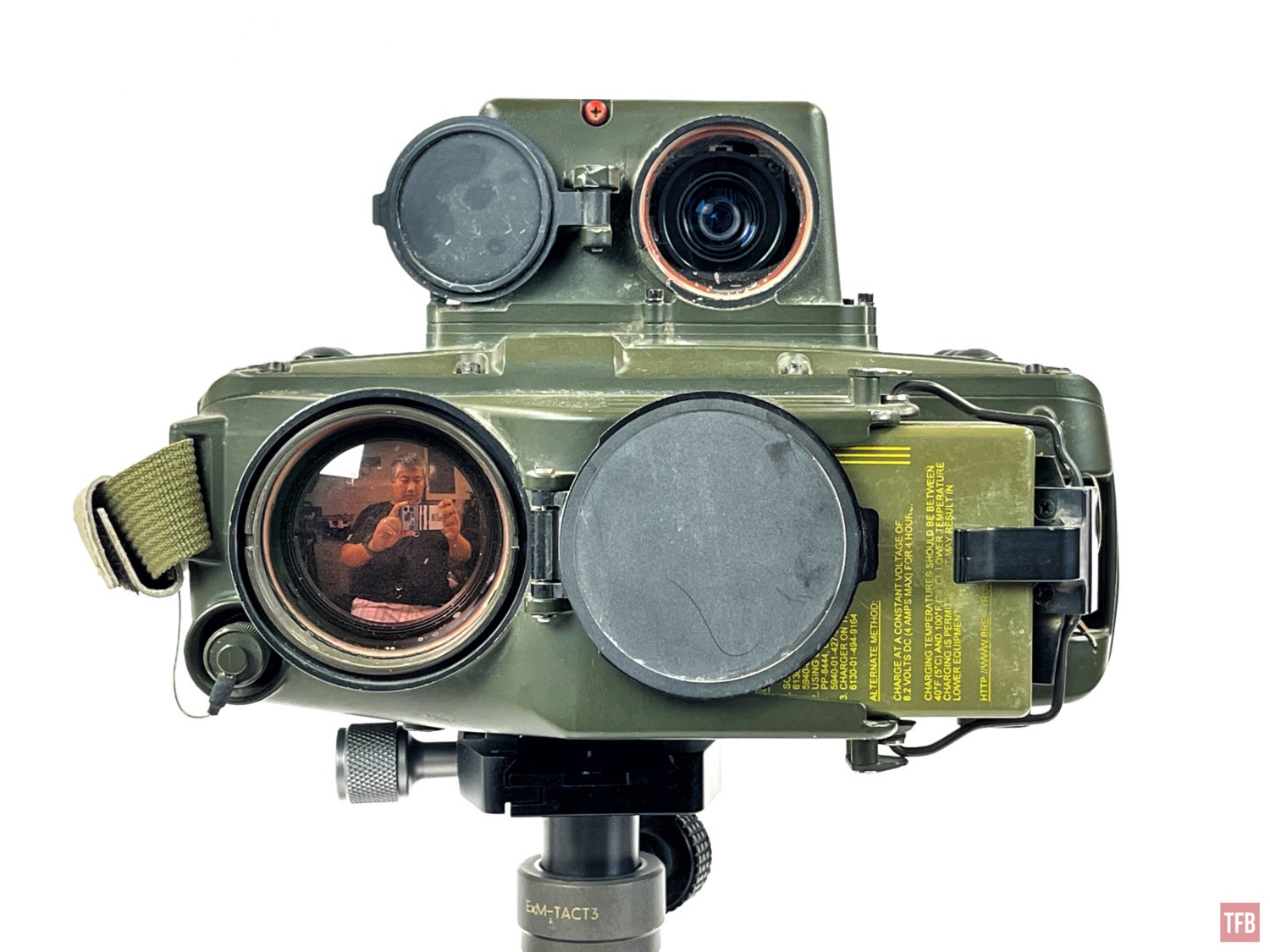
Just to the right of the battery is the J1 port. This is a data part. I suspect this is used to connect to possibly a compass, GPS, or other military devices.


For controls, on the top of the CORAL-SD there are three buttons on either side.
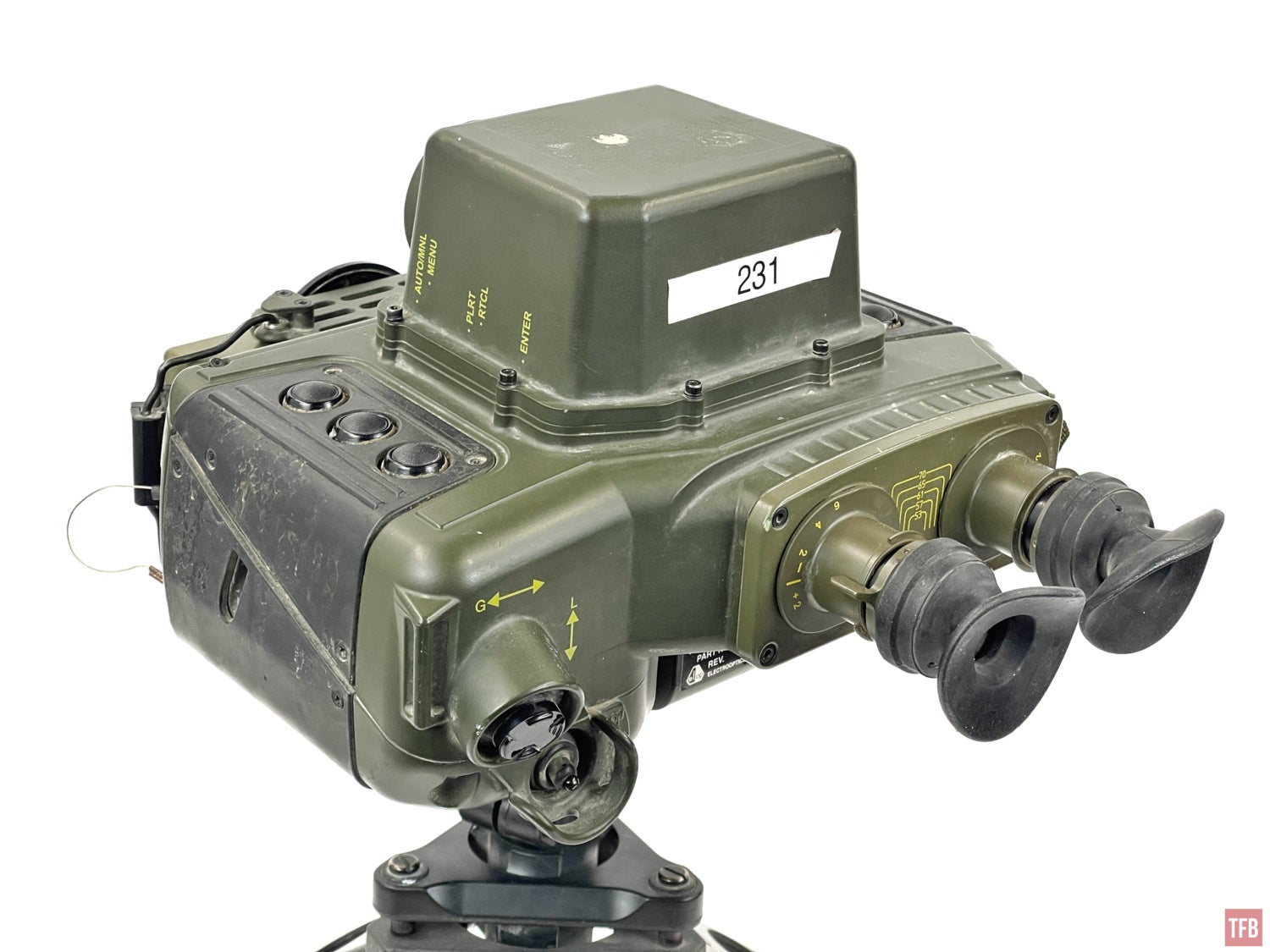
You hold the CORAL-SD like a giant pair of binoculars. Your fingers rest over the three buttons on either side. On the left, you have the Auto/Manual and Menu button. Pressing this button switches from Auto to Manual mode. In the Manual mode, you can adjust gain and levels. If you press this button down and hold it, a menu pops up. The middle button changes polarity. Pressing and holding it down enables the reticle or disables it if is displayed. The third button is for entering and selecting options in the menu.
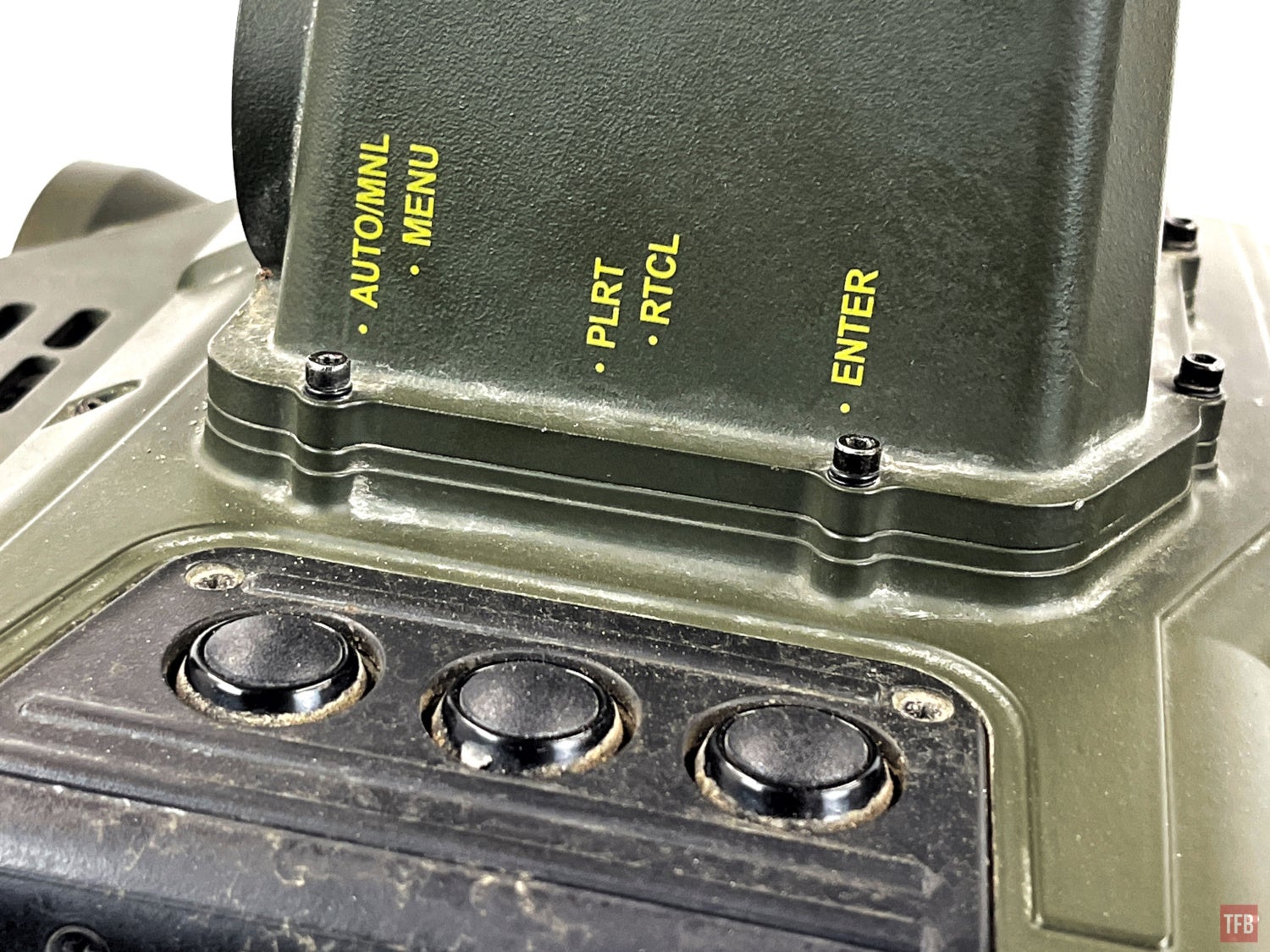
One nice thing about the CORAL-SD over the JIM-LR is the right-hand side buttons. You can adjust focus and zoom independently. My first JIM-LR has focus set as the default setting for the right-hand side buttons. I would have to cycle through the menu to switch to Zoom and then I could zoom in or out. My senior JIM-LR has the zoom function set as default. I would have to cycle through the menu to enable the focus option and then I could adjust focus. Rarely do I need to adjust focus on these devices but I do zoom in and out frequently. But having focus independent from zoom is a definite boon for the CORAL-SD. If you press and hold the zoom button you will enable the 2x digital zoom. Here the JIM-LR is better as it has 2x, 4x, and 8x digital zoom.
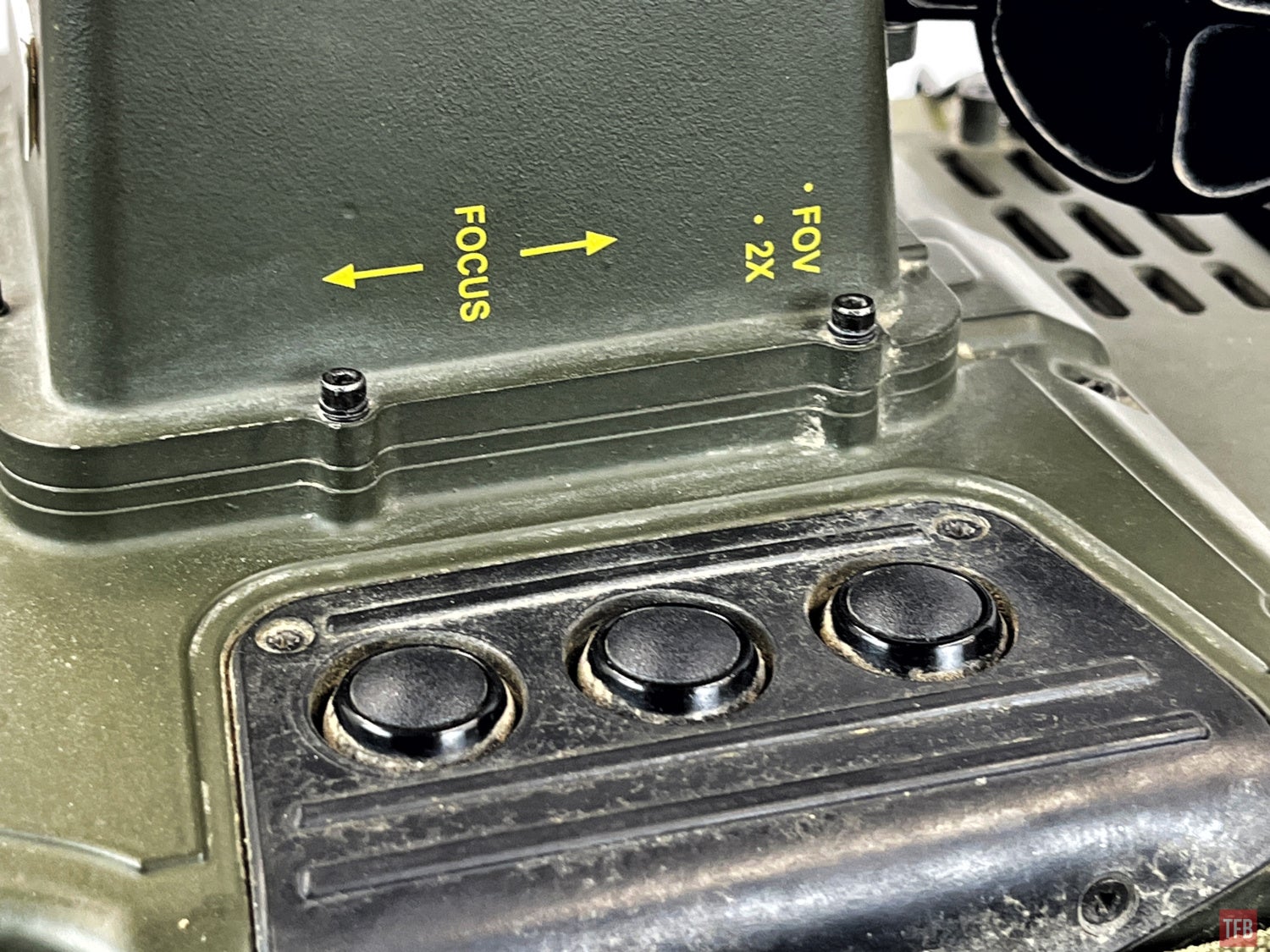
On the back, there is a directional pad joystick. Below that is the power switch. If you are in manual mode pressing left or right adjusts the gain. Pressing the d-pad up or down adjusts levels. The power switch has a standby mode but I cannot figure out how to wake up the CORAL-SD in standby mode. Maybe it just turns the OLED displays off to conserve power and I have to flip the switch to ON to turn them back on.

Underneath the right eyepiece is another button you press with your right-hand thumb. This switches between thermal, EOS mode, and day camera.
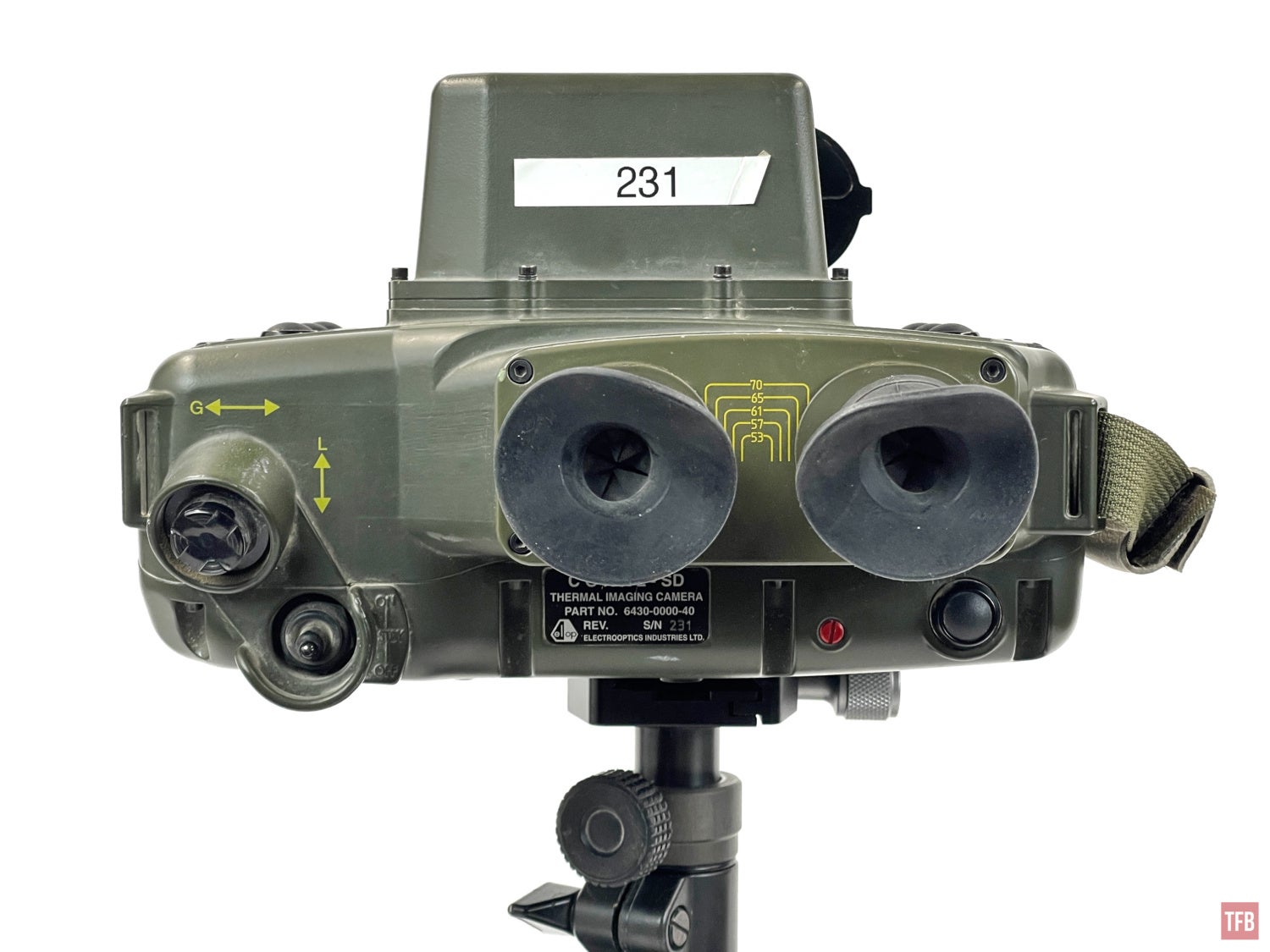
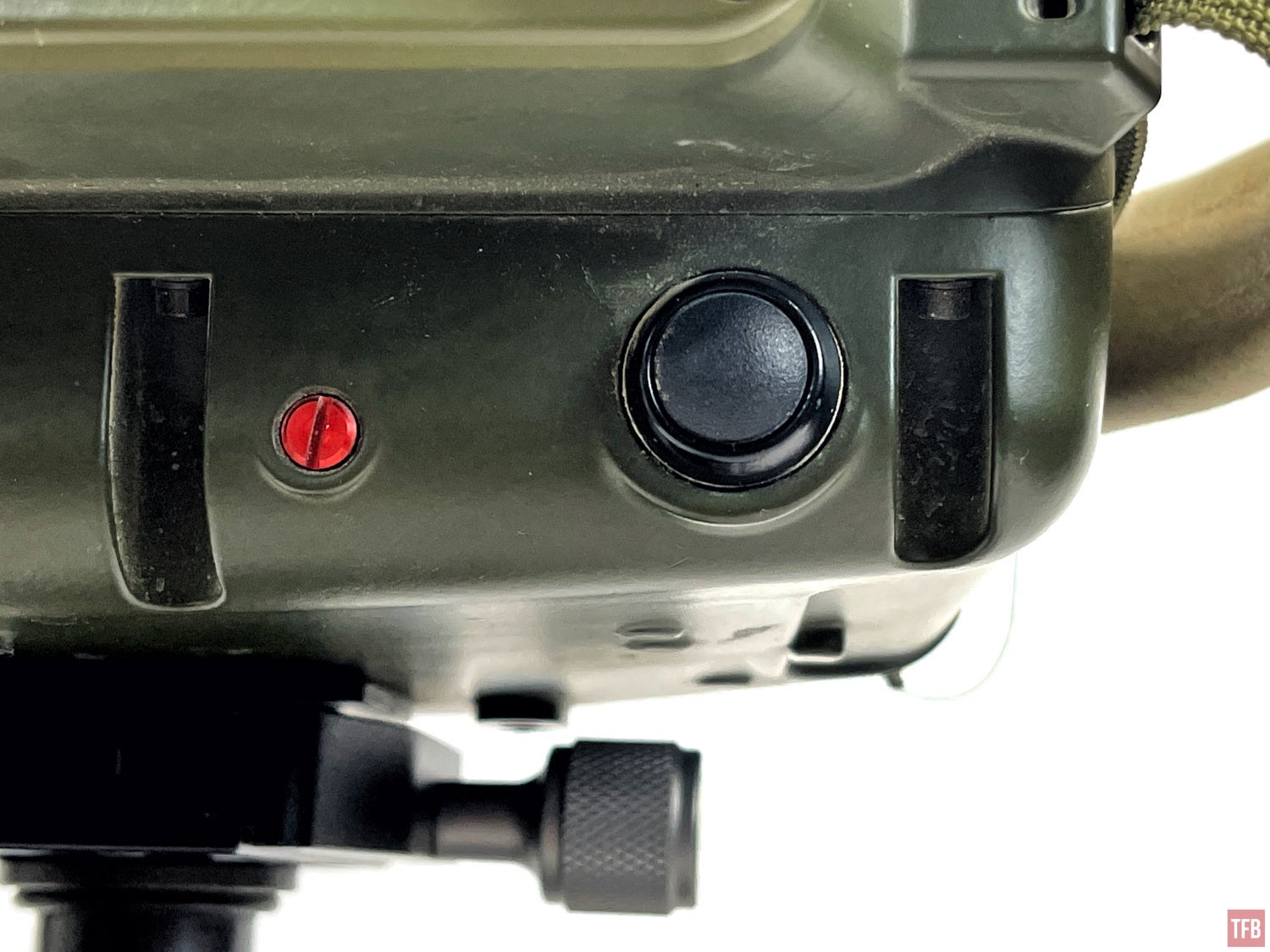
Unlike the JIM-LR, the CORAL-SD has actual eyepieces. They have independent diopters and you can adjust the pupillary distance (PD). You can see the yellow brackets with numbers. Push the eyepieces and the leading edges will touch the brackets that correspond to your PD. The eyepieces are rather tiny and the eyecups have the shutter feature. You have to push them into your eye socket to open them up.

I found it easier to just remove the eyecups but I still feel a little bit uncomfortable having these narrow eyepieces in front of my eyeballs. They are smaller than my eye socket.
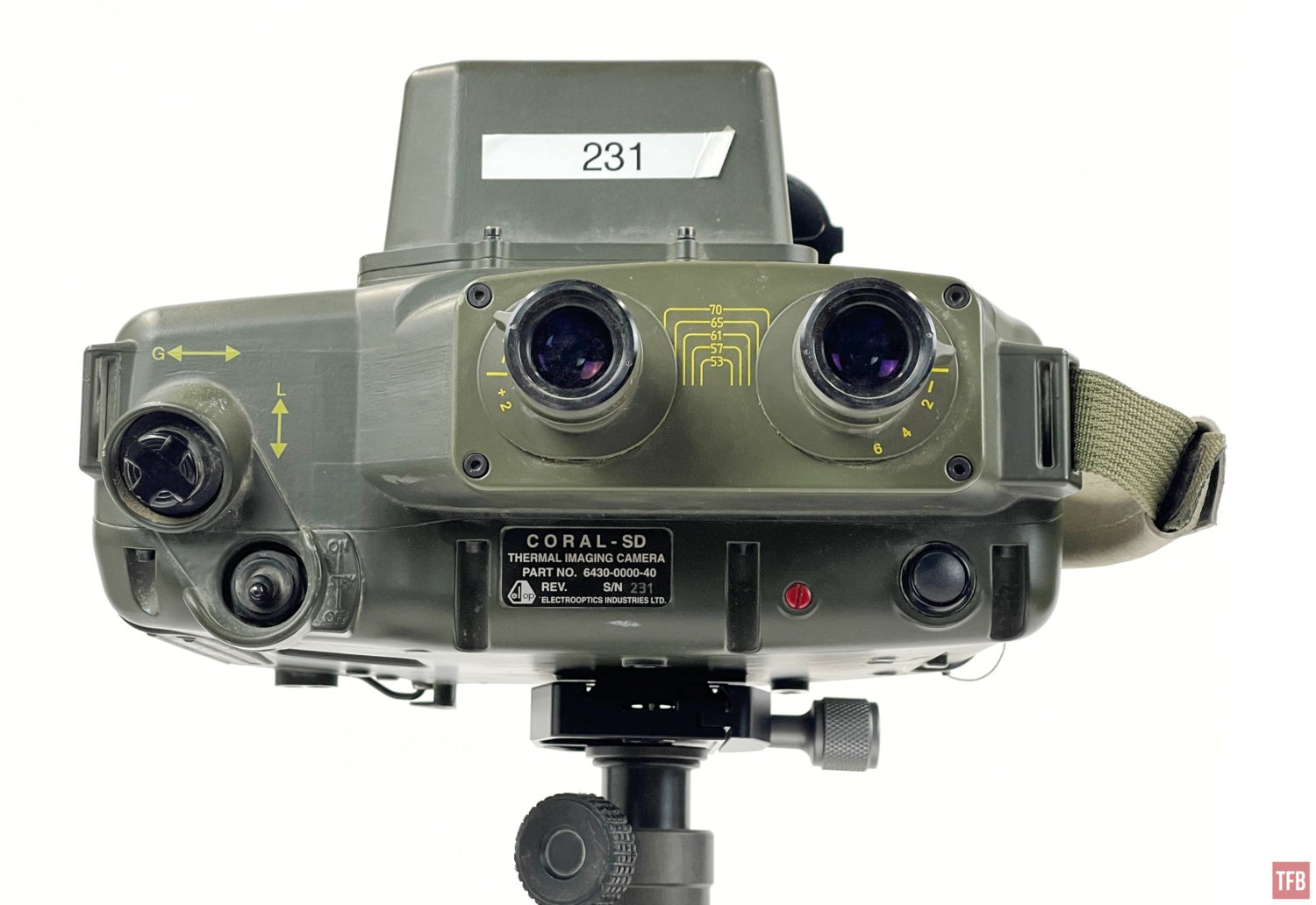
One feature I really like on the CORAL-SD is the video out BNC port just to the left of the objective lens. The placement seems a bit odd as a video cable could get in the way of the objective lens. On the JIM-LR you have to connect to an odd proprietary connector with a special video out cable. Here I can just use any BNC cable and connect it to my USB converter and record the video stream using an app.
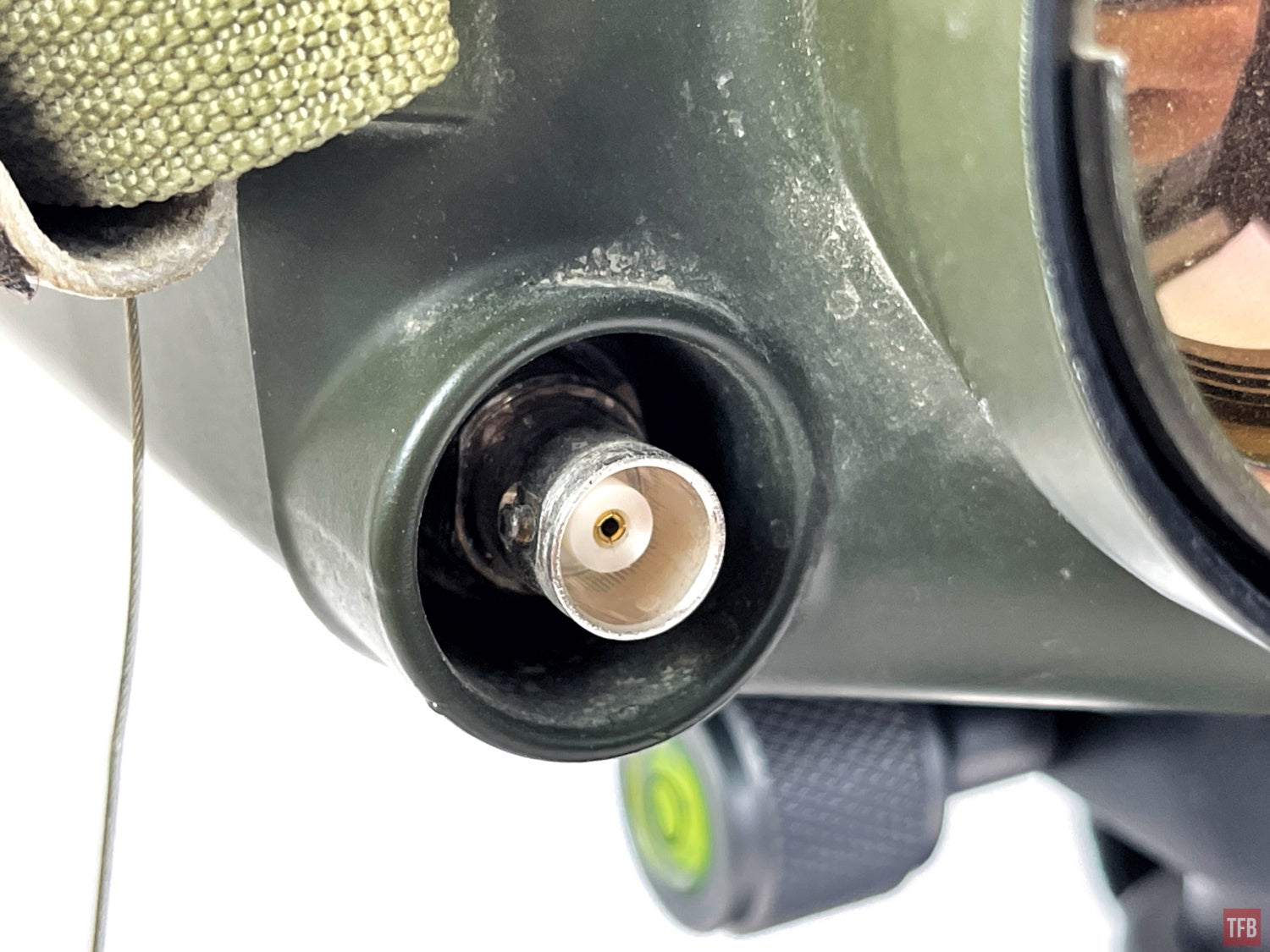
The CORAL-SD is similarly sized to the JIM-LR.
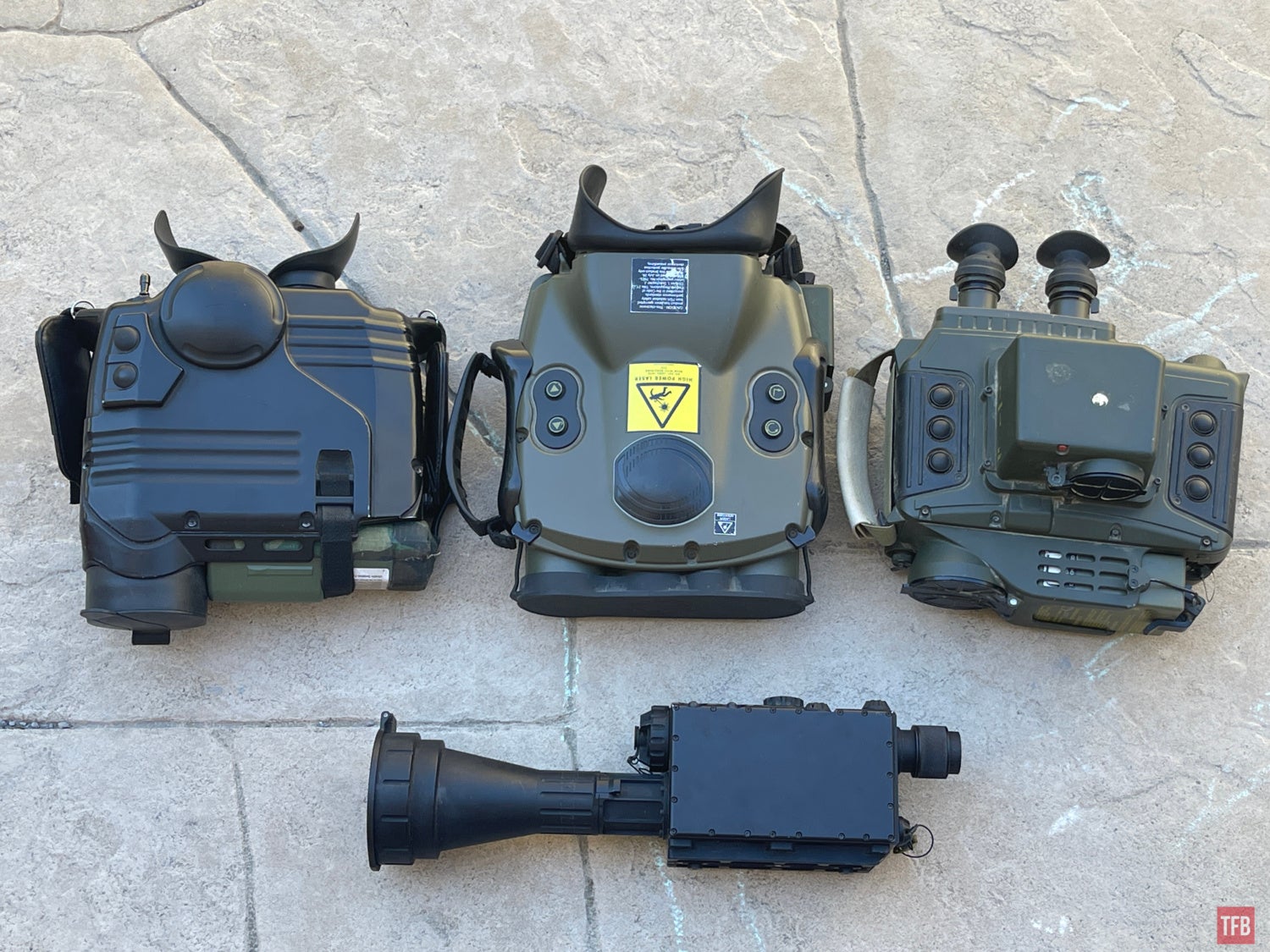
L-R: Sophie, JIM-LR, CORAL-SD FLIR See Spot III below.
Using The CORAL-SD
As mentioned above, the CORAL-SD has some features like button layout and easier video out capability than my JIM-LR. In terms of thermal image quality, they are neck and neck. The CORAL-SD has a mode called EOS. I am not entirely sure what it is for but it has 10 different LUT (Lookup Table). It is almost like different palettes but that is not what is happening. My friend Cajer thinks it might help show subtle differences with higher contrast. When you are in EOS mode, you press up or down on the d-pad to change LUTs. Holding the d-pad right will wipe the EOS image over to reveal the normal thermal image underneath. You can get a slit screen effect. See the video below.
Here is the CORAL-SD looking at the 530 yard shed.
Given the description on Elbit System’s website:
detect a range of threats and thermal anomalies including explosive belts made of plastic and potentially dangerous materials such as glass, ceramic and fluids.
I tried to test this. I concealed a Beretta 92, since it is an all-metal frame handgun, in AIWB without a holster. It did not show up under any of the LUTs. Or under thermal when I had a simple t-shirt hiding it.



The concealed carry test did not seem to yield positive results. So I decided to hide a padded plastic bubble wrap envelope under my shirt. Now the CORAL-SD was able to detect something.

You can see the shape/outline of the padded envelope.

Final Thoughts On The CORAL-SD
The CORAL-SD is neat but it is really limited compared to the Vectronix SAFRAN JIM-LR. It does not have a built-in rangefinder capable of ranging 10km, compass or GPS, nor does it have built-in image capture capabilities.
My contact at Elbit America did not have any information on the CORAL-SD so he said to try contacting Elbit Systems. I tried reaching out to them but have not heard back. I am very curious to see the CORAL-SD do what they claim it can do. I am sure I am not using it correctly since Matt does not have a manual for it.
I find the day camera an odd choice to add to the CORAL. It is neat but it is just a day camera and strangely enough when I output the video through the BNC port I showed earlier in this article, no day channel shows up in the video feed. It only shows FLIR and EOS modes. I tried talking to some EOD friends but they do not use thermal to detect threats. Some other people have reached out to me telling me they used a PAS-22 CORAL for detecting IEDs in Afghanistan. Not the CORAL-SD. If you have used a CORAL-SD, please comment. And thank you for reading along.
 Your Privacy Choices
Your Privacy Choices
